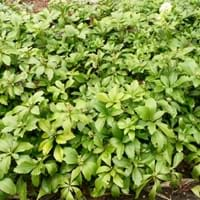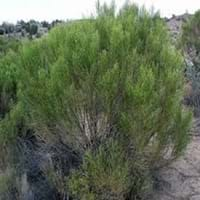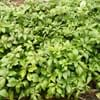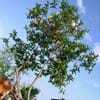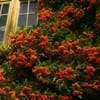Life Span
Perennial
Perennial
Type
Broadleaf Evergreen
Shrub
Origin
China, Japan
Hybrid origin, Southwestern United States
Types
Not available
Not Available
Habitat
Banks, Slopes, Temperate Regions
riparian zones, Semi desert, Upland
USDA Hardiness Zone
4-8
8-10
AHS Heat Zone
Not Available
12-1
Sunset Zone
21,22
7, 8, 9, 10, 11, 12, 13, 14
Habit
Prostrate/Trailing
Spreading
Minimum Height
Not Available
Flower Color Modifier
Bicolor
Not Available
Fruit Color
Not Available
creamy white
Leaf Color in Spring
Dark Green
Green
Leaf Color in Summer
Dark Green
Green
Leaf Color in Fall
Dark Green
Green
Leaf Color in Winter
Dark Green
Green
Leaf Shape
Lanceolate
Oblanceolate , Ovate
Plant Season
Spring, Summer, Fall, Winter
Spring, Summer, Fall, Winter
Sunlight
Partial shade, Full Shade
Full Sun
Type of Soil
Loam
Clay, Loam, Sand
The pH of Soil
Acidic, Neutral
Acidic, Neutral, Alkaline
Soil Drainage
Well drained
Well drained
Bloom Time
Late Spring, Early Summer
Spring
Tolerances
Drought, Variety of soil types
Drought, Dry soil, Heat Tolerance
Where to Plant?
Ground
Ground, Pot
How to Plant?
Divison, Seedlings, Softwood cuttings, Stem Cutting
Seedlings
Plant Maintenance
Low
Medium
Watering Requirements
Requires watering in the growing season
Needs very little water
In Summer
Lots of watering
Lots of watering
In Spring
Moderate
Moderate
In Winter
Average Water
Average Water
Soil pH
Acidic, Neutral
Acidic, Neutral, Alkaline
Soil Type
Loam
Clay, Loam, Sand
Soil Drainage Capacity
Well drained
Well drained
Sun Exposure
Partial shade, Full Shade
Full Sun
Pruning
Remove damaged leaves, Remove dead branches, Remove dead leaves
Cut back old stems to the ground, Remove damaged leaves, Remove dead branches, Remove dead leaves
Fertilizers
All-Purpose Liquid Fertilizer
can go long without fertilizers
Pests and Diseases
Alternaria leaf blight, Canker, Root knot nematode
Pests and diseases free
Plant Tolerance
Drought, Variety of soil types
Dry Conditions, Dry soil, Heat And Humidity
Flowers
Insignificant
Showy
Flower Petal Number
Single
Single
Foliage Texture
Medium
Fine
Foliage Sheen
Glossy
Glossy
Attracts
Bees
Butterflies
Allergy
Not Available
Unknown
Aesthetic Uses
Cottage Garden, Ground Cover, Landscape Designing, Showy Purposes
along a porch, deck or patio, Beautification, Ground Cover, Showy Purposes, Wild gardens
Beauty Benefits
Not Available
Not Available
Edible Uses
Yes
Sometimes
Environmental Uses
Air purification
Air purification
Medicinal Uses
Not Available
anti-inflammatory, Anti-oxidant, cholesterol-lowering
Part of Plant Used
Fruits
Twigs
Other Uses
Container, Culinary use, Florist trade and landscaping, Grown for shade
Can be made into a herbal tea
Used As Indoor Plant
No
No
Used As Outdoor Plant
Yes
Yes
Garden Design
Groundcover
Groundcover
Botanical Name
Pachysandra terminalis
BACCHARIS 'Centennial'
Common Name
Pachysandra, Japanese pachysandra, carpet box, Japanese spurge
desert broom , broom baccharis , greasewood
In Hindi
जापानी रसदार पौधा
desert broom
In German
japanische Spurge
Wüste Besen
In French
Euphorbe japonaise
desert broom
In Spanish
Euphorbia japonesa
escoba del desierto
In Greek
Ιαπωνικά Ευφόρβιο
desert broom
In Portuguese
Spurge japonês
vassoura do deserto
In Polish
japoński Wilczomlecz
desert broom
In Latin
Spurge Italica
desert broom
Phylum
Magnoliophyta
Magnoliophyta
Class
Magnoliopsida
Magnoliopsida
Order
Euphorbiales
Asterales
Family
Buxaceae
Asteraceae
Genus
Pachysandra
Baccharis
Clade
Angiosperms, Eudicots
Angiosperms, Asterids, Eudicots
Tribe
Not Available
Astereae
Subfamily
Not Available
Not Available
Number of Species
Not Available
Importance of Japanese Spurge and Desert Broom
Want to have the most appropriate plant for your garden? You might want to know the importance of Japanese Spurge and Desert Broom. Basically, these two plants vary in many aspects. Compare Japanese Spurge and Desert Broom as they differ in many characteristics such as their life, care, benefits, facts, etc. Every gardener must at least have the slightest clue about the plants he wants to plant in his garden. Compare their benefits, which differ in many ways like facts and uses. The medicinal use of Japanese Spurge is Not Available whereas of Desert Broom is anti-inflammatory, Anti-oxidant and cholesterol-lowering. Japanese Spurge has beauty benefits as follows: Not Available while Desert Broom has beauty benefits as follows: Not Available.
Compare Facts of Japanese Spurge vs Desert Broom
How to choose the best garden plant for your garden depending upon its facts? Here garden plant comparison will help you to solve this query. Compare the facts of Japanese Spurge vs Desert Broom and know which one to choose. As garden plants have benefits and other uses, allergy is also a major drawback of plants for some people. Allergic reactions of Japanese Spurge are Not Available whereas of Desert Broom have Unknown respectively. Having a fruit bearing plant in your garden can be a plus point of your garden. Japanese Spurge has no showy fruits and Desert Broom has no showy fruits. Also Japanese Spurge is not flowering and Desert Broom is not flowering . You can compare Japanese Spurge and Desert Broom facts and facts of other plants too.
